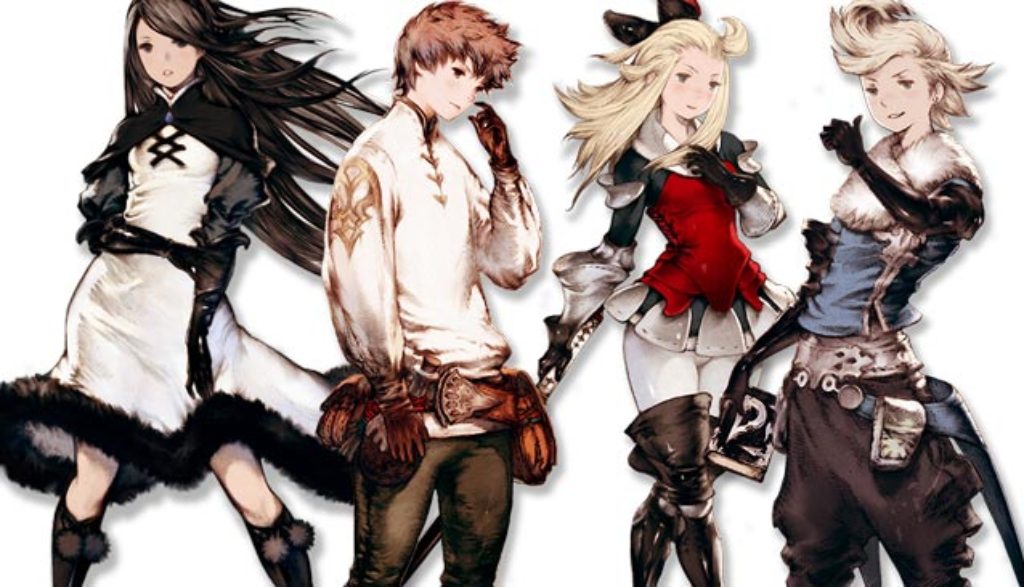
With the advent of the latest generation of video game consoles, it would be easy to think handheld gaming systems like the Nintendo 3DS have seen their day. But apparently no one bothered to tell game designers that, because titles for this popular portable platform just keep topping the sales charts and grabbing everybody’s attention.
Such is the case with Nintendo’s Bravely Default, a classic Japanese role-playing game (JRPG) that focuses on the basic elements of that genre … both the good and the not so good.
Light vs. Dark Once More
Gamers in Bravely Default take on the role of an average-but-goodhearted guy named Tiz. He’s a country bumpkin who awakens unexpectedly in a nearby town after witnessing his village full of family and friends being swallowed whole by some mysterious, malevolent force.
Tiz soon meets a pretty young woman named Agnés Oblige, a priestess (known as a wind vestal) of a dying religion called the Crystal Orthodoxy. The vestals’ assignment: keeping powerful, nearly forgotten, elemental crystals humming along properly. But Agnés’ Wind Crystal, it turns out, has been hijacked by the dark entity that’s now causing chaos throughout the land.
And so it’s time for Tiz, a “shining light” kind of fella, to join with Agnés and two other quirky companions to restore order in quick order. Those companions are Edea, a spunky girl from an enemy camp who wants to change her ways, and Ringabel, an amnesiac ladies’ man with a fortune-telling journal. Together they take on the anti-crystal evildoers in the hope of reestablishing a balance between darkness and light once more.
Putting the Brave and the Default in Bravely Default
Of course, a fantasy RPG tale like this involves lots of venturing through vast, colorful lands. That’s paired with plenty of dungeon-crawling to gather weapons, stat-boosting outfits and magical skills. Along the way, players hear long-winded explanations about the state of the world and its current predicament. As for the game’s action sequences, they consist of turn-based magic-and-sword melees against evil minions, monsters and powerful bosses.
Amid those expected JRPG flourishes and skirmishes, however, is something unexpected: the game’s titular “brave” and “default” options. (You were probably wondering what the title Bravely Default could possibly mean, right?) On each turn, the heroes can opt to default their turn—essentially moving into a defense position and banking an extra move for later. Or they can choose the brave command, which will allow them to unleash up to four total moves in one turn to batter foes or revive friends.
Each team member can brave or default in any given turn, allowing some to keep pushing the fight forward while others store up a foe-finishing flurry of fury for later. It’s a fun option that gives gamers more control and even the possibility of a safety net in the heat of battling an über-powerful enemy. All in all, there’s a fair bit of strategy involved in determining which approach is liable to be the most effective in any given battle.
On top of those gameplay options, the game also offers a diverse “job system” where players can access up to 24 different combat styles and sets of abilities, with stats and skills being assigned to any of the four team members. Finally, I should add that players are also free to swap their characters’ magic or fighting specialties as often as necessary to match up with the battler at hand.
Convoluted Metaphysics
So just how battle-y do these boss battles get? Well, there are rapid-fire sword slashes aplenty, but no blood spilled or other nasty aftermath. Swordplay and “light or dark” spell blasts (including healing spells or life force-draining magickings) are accompanied by flashes of light, red or blue splashes of color or black puffs of smoke. When characters are defeated or their strength wanes, they either take a knee or slump forward in exhaustion.
There are other content issues in this T-rater that we need to deal with, though. Some scenes depict drunken characters at a pub. Lightly veiled sexual innuendo shows up. Ringabel regularly discusses his seductive prowess, bragging about “getting into bed” and what it means to be “sexy.” A Red Mage is accused of using a “pheramore toxin” to control and “misuse” women. And some of the outfits available for female characters can be skimpy.
The biggest poke to the gaming gut here has to be the game’s convoluted metaphysical underpinnings. This is an extremely mystical-minded take on an ancient fantasy world of magical crystals, monsters, immortals and other evil demonic forces. Example: At one point a fairy-like character transforms into a Jabba the Hutt-looking demon bug with multiple arms and a growling voice.
It’s true that Bravely Default’s worldview weirdness is sometimes kept at arm’s length by its cartoony characters and light vs. dark heroic thrust. Still, young players immersed in this elaborate 3DS narrative will frequently find themselves wading through murky religious themes fused to brooding fantasy elements.

After spending more than two decades touring, directing, writing and producing for Christian theater and radio (most recently for Adventures in Odyssey, which he still contributes to), Bob joined the Plugged In staff to help us focus more heavily on video games. He is also one of our primary movie reviewers.